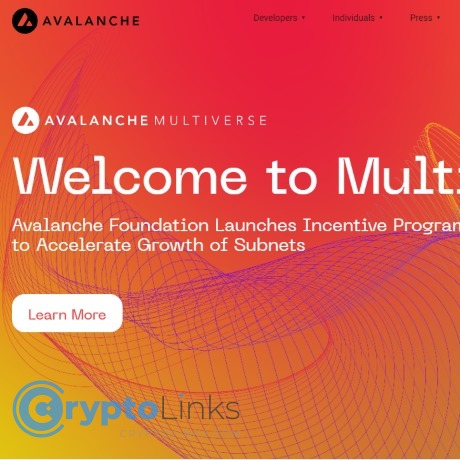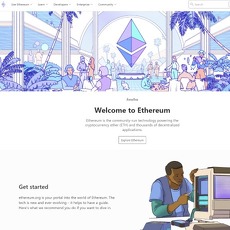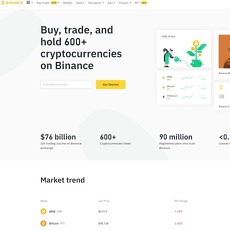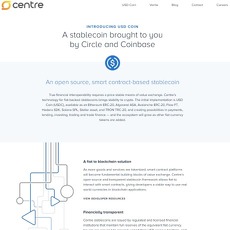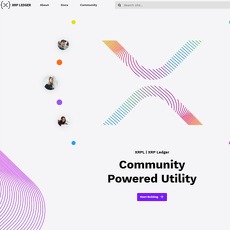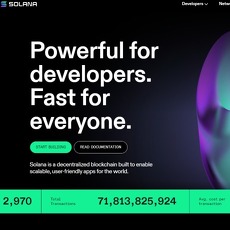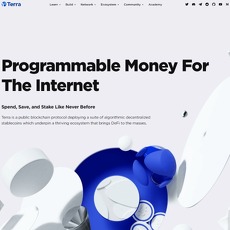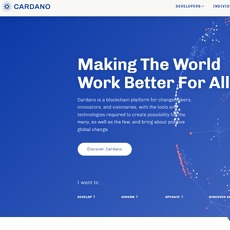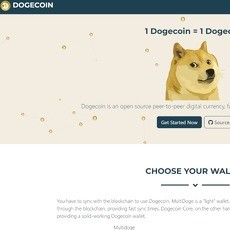Avalanche (AVAX) Review
Avalanche (AVAX)
www.avax.network
Avalanche (AVAX) Review: What Is Avax And What Makes It Special?
What is Avalanche (AVAX)?
Avalanche (also called Avax) is the native digital currency of the Avalanche smart contract blockchain-enabled network. The network promises speed in confirmation time and extreme scaling abilities. Avalanche competes with other blockchain networks, and it races to be the blockchain with complete features. It is an open-source network and decentralized platform for new primitive financial users.
Avalanche is designed to function as a secure, open-source, and decentralized network. Developers of the project call Avalanche the "platform of platforms." The network uniquely exploits three distinct blockchains to develop a permissionless, trustless, and interoperable structure.
The platform serves as a bridge between traditional financial markets and decentralized applications (also called DApps). Avalanche is Referred to as the "Internet of finance" and permits interoperability between other blockchains and third-party tokens. The exchange between third-party tokens and blockchain networks leverages data on the Avalanche network, resulting in low costs and improvement with a permissionless system in the decentralized financial system. Users can generate private and public customized blockchains.
What Problems Does Avalanche Solve?
Avalanche was developed to counter the multiple problems users encounter in most blockchain networks. It is sometimes referred to as the Ethereum killer because of its position in the market as a network with low gas fees and high efficiency. It has more functionalities, is more programmable, and provides viable alternatives to other blockchains.
Low Fees
Compared to Ethereum, gas fees on Avalanche are very affordable. Their transaction fees are burned, causing fewer available Avax tokens. Users pay fees on staking, minting of assets, and the creation of blockchains.
Congestion
The platform is placed side to side with top financial payments services in the world, such as VISA. Avalanche is created as a scalable network and can process around 4,500 transactions per second. Also, the transactions feature sub-second finality.
History of Avalanche
The development of Avalanche has been in process for over a year before it finally launched in 2020. The platform was created by Ava Labs, led by Dr. Emin Gün Sirer, and assisted by his students, Marfan "Ted" Yin and Kevin Sekniqi.
Initially, Avalanche was a platform for solving consensus in a network having machines that can't be relied on, where crash-fault may be the failure involved. In May 2018, a fictitious group called Team Rocket shared the basic protocol on InterPlanetary File System (IPFS). A later development was carried out by a dedicated team of researchers from Cornell University.
In March 2020, AVA DAP, the AVA codebase for the Avalanche consensus protocol, became open-source and available to the public, and it issued its native token Avax in September 2020. Right away, Avalanche token sale raised $42 million in less than 5 hours, where notable figures like Andreessen Horowitz—a venture firm, and participants from an Ethereum Genesis address were involved.
How Does Avalanche (AVAX) Work?
At its core, Avalanche's innovation leverages three blockchains other than the usual one used in the industry. The sole reason behind this design is to have multiple chains, with each performing specific tasks in the broader Avalanche ecosystem instead of having a single chain that performs all the tasks. Sharing tasks amongst multiple chains keeps the Avalanche platform agile, allowing it to achieve decentralization, security, and scalability.
The uniqueness of Avalanche is based on three primary components of its design: its incorporation of subnetworks, its consensus mechanism, and its use of more than one chain built in its blockchain.
Avalanche Consensus Mechanism
For a blockchain network to validate transactions, the nodes in the network must reach an agreement or consensus. Proof of Work (PoW) and Proof of Stake (PoS) are examples of consensus mechanisms used in blockchain to validate transactions and are the leading methods for reaching this agreement.
Avalanche uses a consensus mechanism that builds on the Proof of Stake protocol. When users initiate transactions, it's received by a validator node. The validators in the network perform a sampling procedure repeatedly to reach a consensus. This way, one validator's message is sent to other validators, which sample several validators repeatedly until the whole system reaches a consensus.
Validators are rewarded if the node plays by the rules, called Proof of Correctness, and according to the amount of time a node staked its tokens, called Proof of Uptime.
Subnet
Subnets are solutions for organizations or developers to create customized blockchains. These blockchains could be NFTs or Defi and could also be made open to the public or closed to verified users.
Avalanche subnets work similarly to the scaling solution in blockchains like Polkadot's and Ethereum 2.0 sharding. Basically, a subnet is a clone of the original blockchain (this is the Primary Network for Avalanche) attached to the platform at launch.
Note that subnets can be created by users on-demand. In the real world, it means that a subnet can launch another subnet to meet or surpass traffic demands and grant permission to transactions once its scaling limits are temporarily exhausted. In summary, the creation of subnets is unlimited.
Exchange Chain (X-Chain)
The Exchange Chain (X-Chain) is the original asset blockchain on Avalanche, responsible for creating new assets and transferring assets. The X-chain is designed to be easily programmed. This chain is suited for applications that don't need total ordering ( faster asset transfers use the Exchange Chain). The Exchange Chain uses the Avalanche consensus protocol.
Fees generated when transactions take place on the X-Chain are paid in Avalanche's native token, Avax, similar to how gas fees on Ethereum are paid in ETH.
Contract Chain (C-Chain)
The Contract Chain (C-Chain) is the basic smart-contract blockchain on Avalanche responsible for creating any smart contracts compatible with important Ethereum tooling. This blockchain is designed for applications that need total ordering. The Contract Chain uses the Snowman consensus protocol.
The C-Chain was developed to make the conversion simple for Ethereum decentralized applications. Users can seamlessly move their Dapps to this blockchain. The protocol supports popular features, such as MetaMas, Remix, Web3.js, Truffle Suite, and the Embark Platform.
Platform Chain (P-Chain)
This platform chain was designed to coordinate Validators. The P-Chain governs every utility that can be found in the network. It implements the Snowman Consensus Protocol, plays a role in tracking and creating new subnets, and allows for the staking of tokens on the network.
Benefits of Avalanche (AVAX)
The major benefits of Avalanche can be found in the way it was created. The founders created a solution to address the common challenges other blockchain networks face through its unique model.
Interoperability
Not all blockchains accommodate the trading of multiple digital currencies of various forms and the sharing of data with other platforms. Avalanche promotes interoperability by allowing different blockchains to effectively share data with one another.
Scalability
Bitcoin and Ethereum are faced with limitations. Mining Bitcoin (BTC), for example, requires a huge amount of energy and computing power. Also, Ethereum can only accommodate 15 transactions per second. Although these blockchains are highly valuable and powerful, their limitations make it difficult for them to scale. On the other hand, Avalanche was built to be scalable and boasts of an incredible processing capacity of about 4,500 transactions per second.
Usability
Without a doubt, Avalanche has proven to be useful in promoting digital assets. One of the things users look out for in software is usability, ease of use, easy implementation in various applications, and to what extent the software can be used.
How And Where to buy Avalanche (AVAX)
Avax is available for purchase on a wide range of platforms. This includes Uphold, BitPanda, Binance, and Gate.io.
How to buy Avalanche (AVAX) on Binance
Step 1 – Open an account on Binance
- Go to binance.com and select "Register" to register an account. You will be redirected to a "Create a Free Account" page with the option to register with your email address or your mobile number.
- Enter your details on the email tab or switch to the table labeled "Mobile" at the top of the form. Select your country code and input your mobile number and password. Select the Terms of Service and click on "Create Account."
- Next, complete the Security Verification to confirm that you're not a robot. An SMS verification code will be sent to your email or mobile phone. Input the 6-digit verification. The verification is valid for only 30 minutes and should be entered immediately.
- Upon completion, a welcome page will load, and you can choose to trade or purchase digital assets.
Step 2 – Secure your account with two-factor verification
Enhance your account security by enabling two-factor authentication (2FA), including phone verification and Google verification.
Step 3 – Choose how you want to buy the Avalanche (AVAX) asset
On the left of the Binance website, Click on the "Buy Crypto." Below are ways you can purchase AVAX.
- Credit/Debit Card: This is the easiest option new users can use to purchase Avalanche (AVAX). Both Visa and MasterCard are supported on Binance.
- Bank Deposit
- Peer-to-peer (P2P) Trading: You can buy Avalanche (AVAX) directly from other users with the Binance P2P service.
- Third-Party Payment
- Store or use your Avalanche (AVAX) in Binance: Now that you have your crypto, you can store it in your crypto-wallet or hold it in your Binance account. Also, you can stake your crypto on Binance Earn to earn passive income.
Avax Vs. Solana
Avalanche (AVAX) and Solana (SOL) are highly esteemed networks because they are considered the biggest Ethereum-killers in the ecosystem. The Solana token and Avalanche token are valued at over $33 billion and $20 billion, respectively. These tokens have drastically fallen compared to their levels in 2021. At the time of writing, Avax suffers over 47% from its highest point in 2021, and Solana is much worse since it fell by 61% from its all-time high.
Solana
Solana is a leading blockchain project known for its efficiency and speed. Solana claims it can process as many as 2,000 transactions per second and has been used to build some of the most widely used applications in the world. This includes Brave Browser—a platform with over 50 million users every month; Audius—a music streaming company; and Steph's—one of the fastest-growing fitness and NFT platform, Marinade Finance, Serum, and Raydium.
Solana has been very vital in the Decentralized Finance (Defi) industry. Its total value locked (TVL) is more than $6.77 billion, lower than its all-time high of over $14 billion. While Solana's ecosystem is growing, the network might suffer some risk because of the sign that the network is easing in its number of transactions.
Avalanche
Avalanche is called the "platform of platforms" for a reason. The network, like Solana, is looking to disrupt Ethereum's network. Compared to Solana, it is even faster and more efficient. It has grown strongly in the past few months and has a total value of more than $10 billion locked.
Some of the best-known developers in the industry use Avalanche. Projects like AAVE, BENQI, Trader Joe, and Curve are built on the Avalanche network. Also, leading platforms in the industry, such as 1inch, Arweave, Alliance Block, Avalaunch, and Atlantis World, are found in the network.
Between Avalanche and Solana, I will say that Avalanche is a better investment.
Pros and Cons of Avalanche (Avax)
Pros of Avax
- Better transaction speed. Up to 4500 transactions per second.
- Less Avax tokens in circulation as a result of burning.
- An effective fee model with the subnets creation has high transaction fees and low fees in AVAX transactions.
- Additional rewards can be earned through staking.
- Compatibility with other blockchain platforms like Solidity and the programming language of Ethereum.
- DApps can be easily transferred.
- 50% reduction in transaction fees due to the Apricot update.
Cons of Avax
- Possible congestion in the network with more blockchain.
- A lack of better spam management could lead to attacks on the network.
Frequently Asked Questions
What is Avax?
Avax is an open-source, decentralized platform built on the foundation of the proof-of-stake consensus mechanism blockchain protocol. The blockchain and cryptocurrency token competes against Ethereum and is the Ethereum killer.
Is Avax Proof-of-Work (PoW)?
No, Avax implements the proof-of-stake (PoS) consensus mechanism. In the proof-of-stake consensus mechanism, nodes are assigned to mine blocks according to the number of tokens they hold, unlike Bitcoin, which uses the proof-of-work mechanism, where miners or nodes in a network compete to solve mathematical problems and earn a reward.
Is Avax a Good Investment?
It might be. According to the price forecast, it is believed that it can reach $1,000, and some forecasts are bullish. For example, Gov.capital predicts that the token might reach $1,000 in 2025. However, do your research before investing because predictions can be wrong.
Conclusion
Avalanche (AVAX) is a powerhouse in the blockchain arena, delivering unparalleled speed, scalability, and low-cost transactions through its unique tri-chain architecture and innovative consensus mechanism. By addressing Ethereum’s limitations with sub-second finality, interoperability, and a developer-friendly ecosystem, Avalanche is a top contender for DeFi, NFTs, and beyond. Despite potential risks like network congestion, its robust features and growing adoption make it a compelling choice for investors and developers. Ready to explore Avalanche’s transformative potential?
Dive deeper into Avalanche and other cutting-edge blockchain projects at CryptoLinks.com, where you’ll find expert reviews, trusted resources, and the latest insights to fuel your crypto journey. Explore now and unlock the future of decentralized technology

